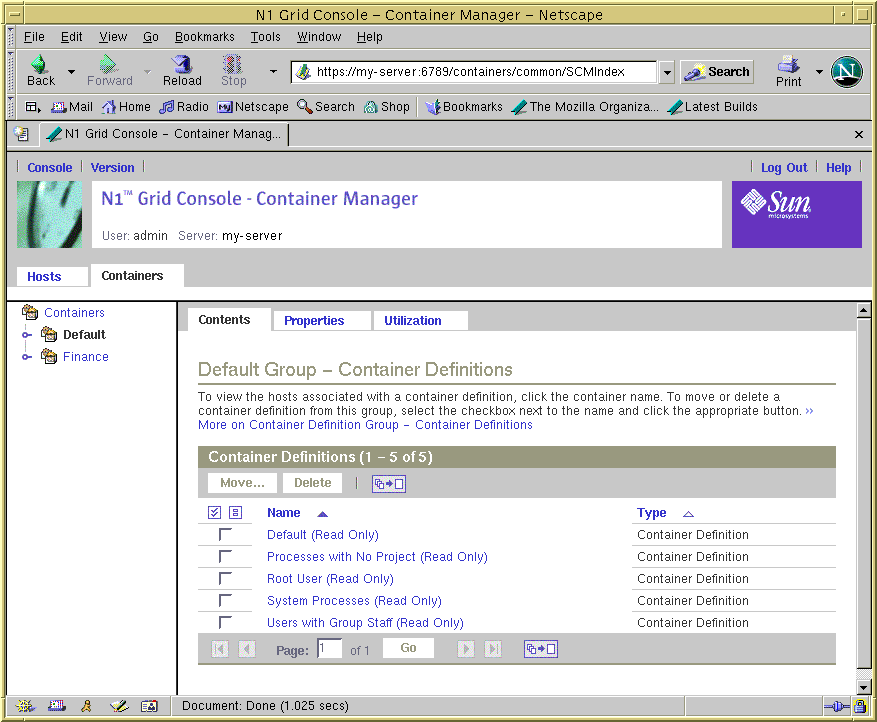Default Containers
After the software is set up, the Containers view is initially loaded with a group titled Default. This group holds the following five default containers on a host running the Solaris 9 Operating System (OS):
-
Default
-
Processes with No Project
-
Root User
-
System Processes
-
Users with Group Staff
Note –
On a host running the Solaris 8 release, the Users with Group Staff (group.staff) container does not exist. Otherwise, the default containers are the same.
Figure 3–5 Sample: Default Containers Group With Container Definitions Showing

Each default container is in the active state, and the boundaries are set at .01 minimum CPU reserved and no memory cap. A default container is always bound to the default resource pool (pool_default) of the host. You can monitor the resource utilization and run reports on each default container if you have Performance Reporting Manager installed.
These default containers cannot be deactivated, edited, or deleted. Each is labeled Read Only accordingly.
Every UNIX user is assigned to a default project, and is correspondingly assigned to a default container. Initially, the default containers hold all processes that are running on the system. As you create custom containers, processes are moved from the corresponding default container into the container you create.
- © 2010, Oracle Corporation and/or its affiliates
